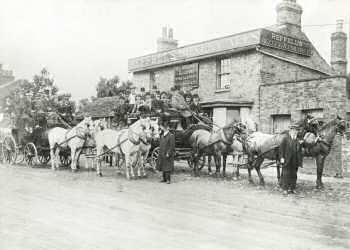History of Blackfen
The name Blackfen literally means "black marsh" and probably refers to the dark, marshy soil of this area, which lay between the ancient estates of Danson and Lamorbey and on the edge of the great West Wood to the north. The local pubs the Woodman and the Jolly Fenman testify to the area's links with both the marshland and the woodland. The whole area, including the hamlet of Blackfen, came within the manor of Bexley.
Its earliest mention was in an assize roll (trial record) of 1241 when it was referred to as "Blackwene". Farmland covered the area until a major programme of house building began in the 1920s. The two most ancient farms were Black Fenn Farm and Days Lane Farm, both of which were mentioned in documents in the 1600s. However, Blackfen was also surrounded by great estates such as Lamorbey, Danson and Blendon with their grand houses and rich residents.
The main estate, Danson, was owned by the railway entrepreneur Alfred Bean in the latter part of the 19th century. It was sold in 1922 and this was the stimulus for the house building that would take place throughout the latter part of the 1920s and on into the 1930s. Bean had always envisaged the estate being broken up for this purpose, and he was the prime mover in the building of the Bexleyheath Railway in order to facilitate the process. Nevertheless, much of the core of the estate remains to this day as Danson Park.
The Queenswood and Westwood estates that straddled the Blackfen Road just west of the junction with Westwood Lane were built by CR Leech in the early 1930s and featured semi-detached three-bedroomed houses offered freehold for £675. The Blendon Estate was sold to the local builder DC Bowyer in 1929 and developed for residential building shortly afterwards.






